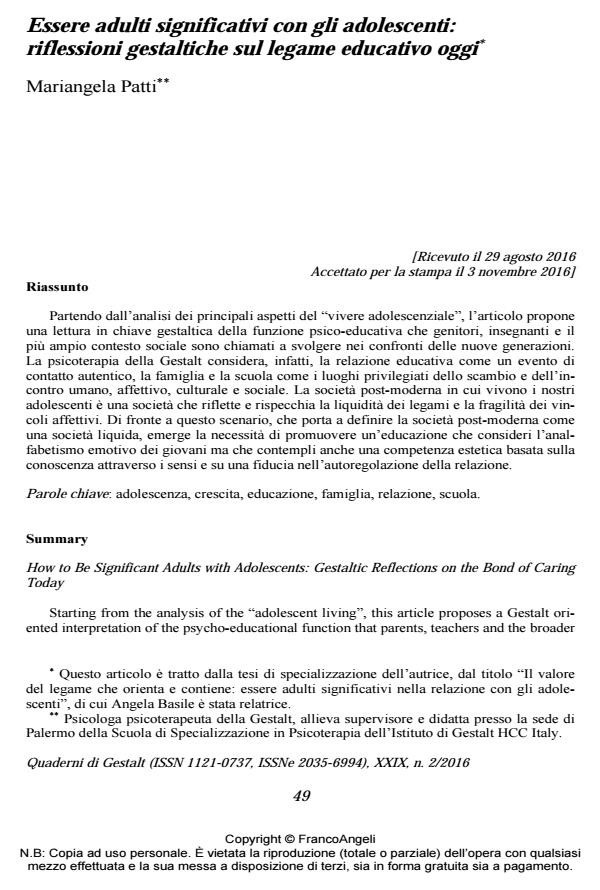How to Be Significant Adults with Adolescents: Gestaltic Reflections on the Bond of Caring Today
Journal title QUADERNI DI GESTALT
Author/s Mariangela Patti
Publishing Year 2017 Issue 2016/2
Language Italian Pages 9 P. 49-57 File size 164 KB
DOI 10.3280/GEST2016-002005
DOI is like a bar code for intellectual property: to have more infomation
click here
Below, you can see the article first page
If you want to buy this article in PDF format, you can do it, following the instructions to buy download credits

FrancoAngeli is member of Publishers International Linking Association, Inc (PILA), a not-for-profit association which run the CrossRef service enabling links to and from online scholarly content.
Starting from the analysis of the "adolescent living", this article proposes a Gestalt ori-ented interpretation of the psycho-educational function that parents, teachers and the broader social context are called to play towards new generations. In fact, Gestalt psychotherapy looks at the educational relationship as a genuine contact event, where the family and the school are the favorite places of the exchange and of the human, affective, cultural and social encounter. The post-modern society where our teenagers live, reflects the liquidity and fragility of the emotional bonds. In the context of what has been defined as the "liquid modernity" in the post-modern society, there is the necessity to promote an education that considers the emotional illiteracy of young people and at the same time includes an aesthetic approach based on the knowledge through the senses and a confidence in the self-regulation of the relationships.
Keywords: Adolescence, growth, education, family, relationship, school.
Mariangela Patti, Essere adulti significativi con gli adolescenti: riflessioni gestaltiche sul legame educativo oggi in "QUADERNI DI GESTALT" 2/2016, pp 49-57, DOI: 10.3280/GEST2016-002005